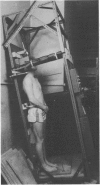Abstract
Spinal shrinkage was used as an indicant of loading on the spine in circuit weight-training and running regimes. The loss of stature during two sets of a circuit of weight-training (n = 10), a 6 km run by novices (n = 9) and a 25 km run by trained runners (n = 7) was assessed in male subjects. Shrinkage was not significantly different between the weight-training regime and the 6 km run by novices, mean losses being 5.4 and 3.25 mm respectively. The rate of height loss in the experienced runners was 2.35 mm over 6 km run at 12.2 km.h-1, representing 0.4 mm.km-1 over the 6 km run, this shrinkage rate being continued over the last 19 km run at 14.7 km.h-1. The loss of height could not be predicted from a set of covariates. The magnitude of the circadian variation, mean 14.4 mm, exceeded the change in height during the 25 km run. The diurnal variation conformed to a cosine function, though a better fit was obtained with a power function equation. A marked diurnal pattern was also observed in lumbar extension. Though reversal of spinal shrinkage was observed during a night's sleep, no significant recovery occurred during a 20 min resting period immediately following the exercise regimes. These results have implications for the warm-up and timing of exercise regimes that impose significant loading on the spine.
Full text
PDF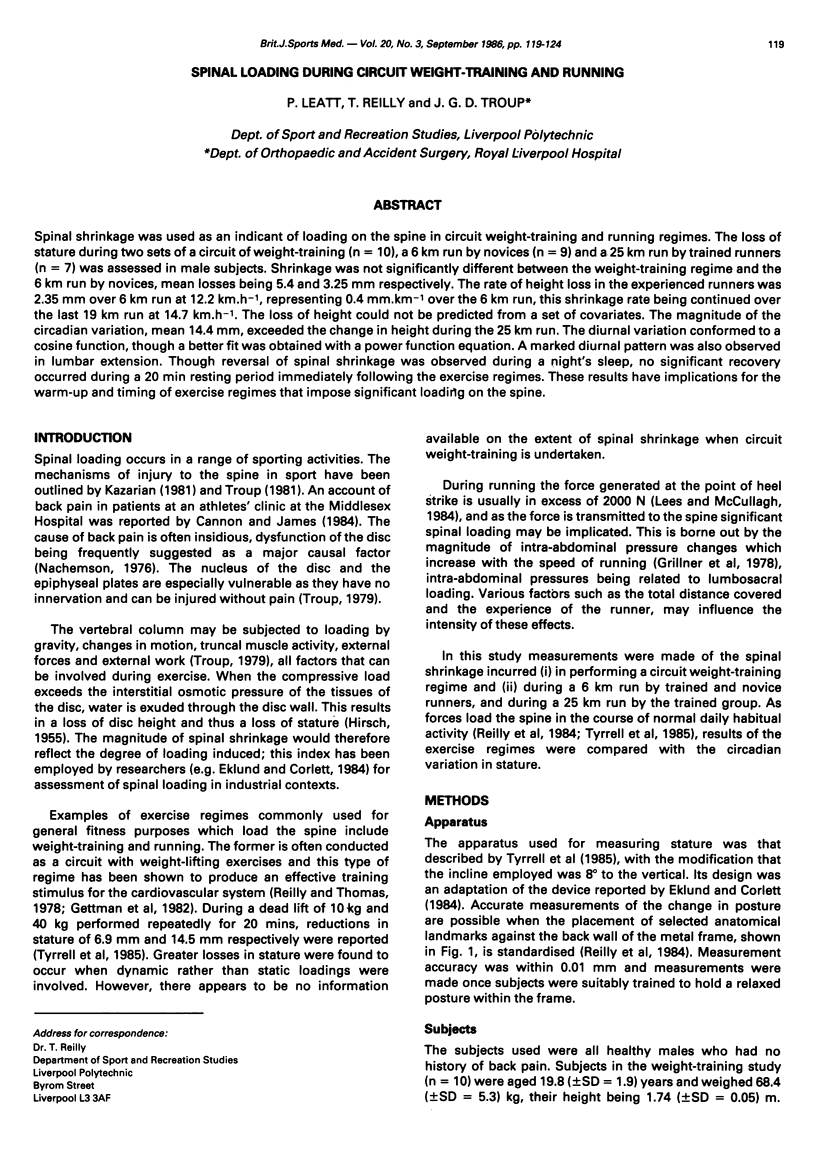

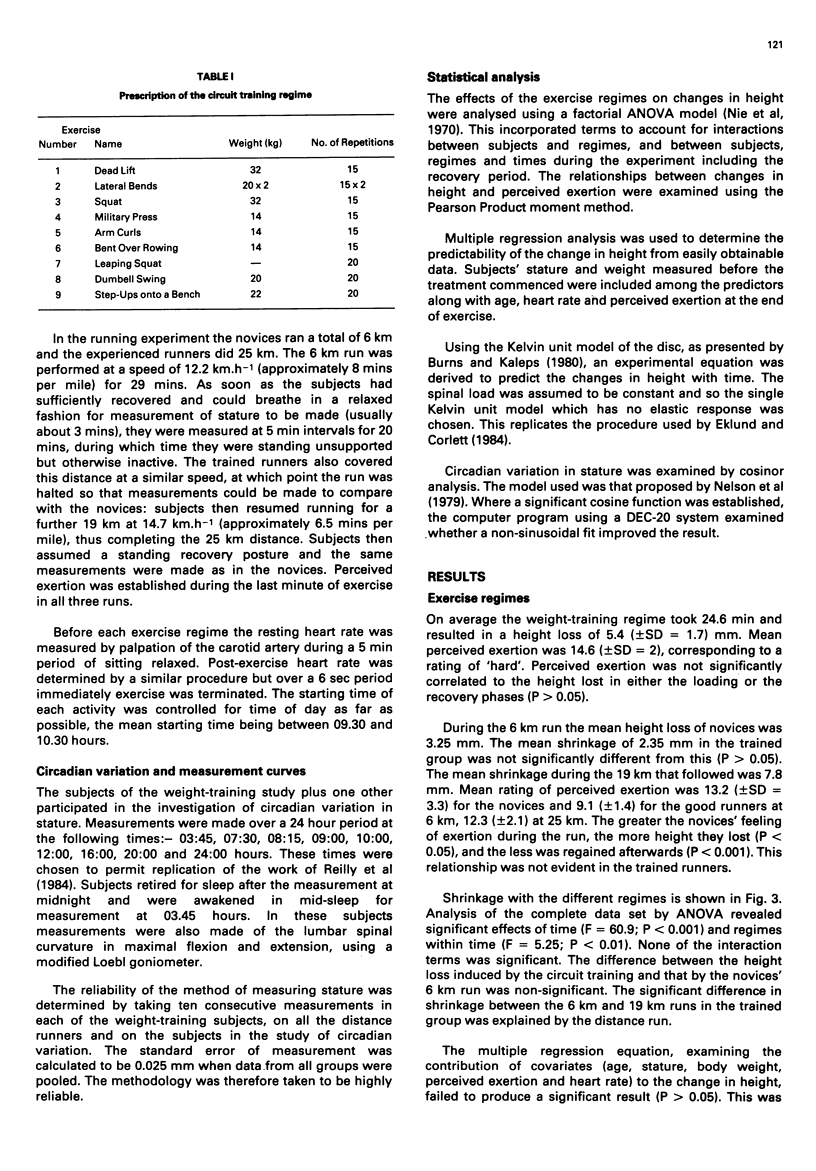
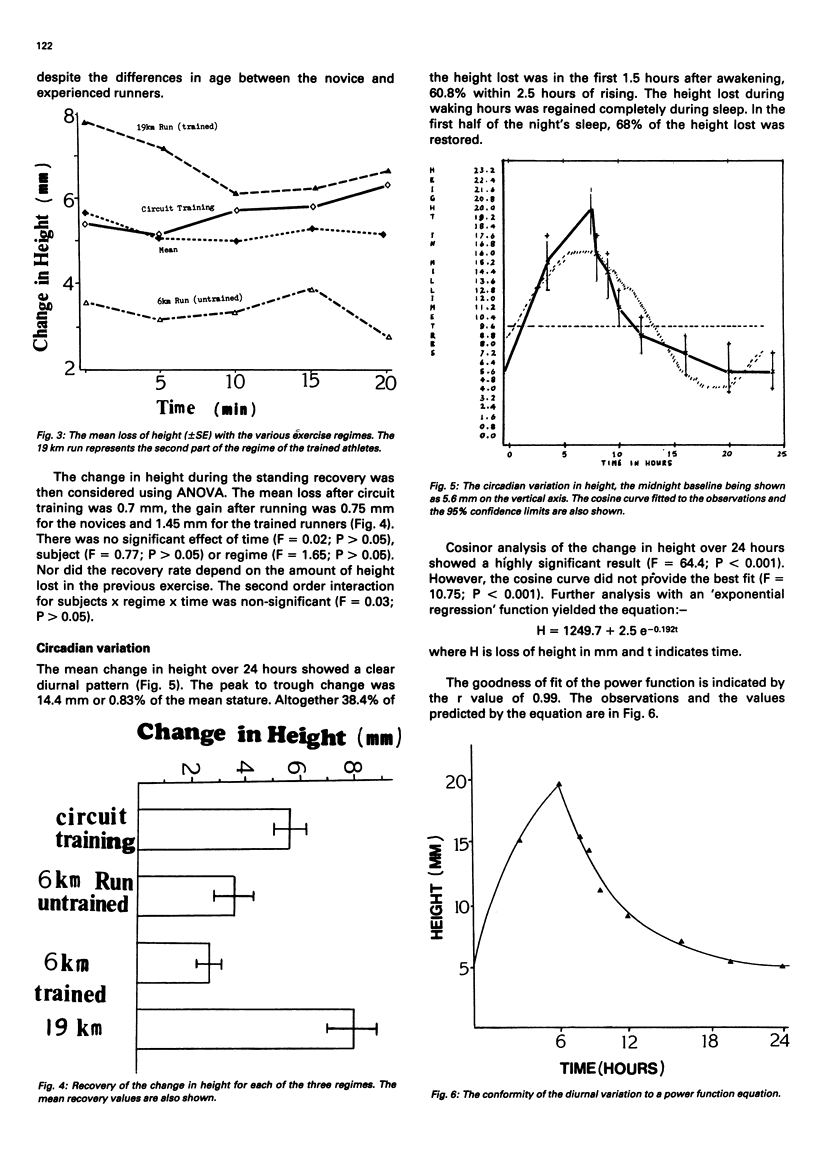
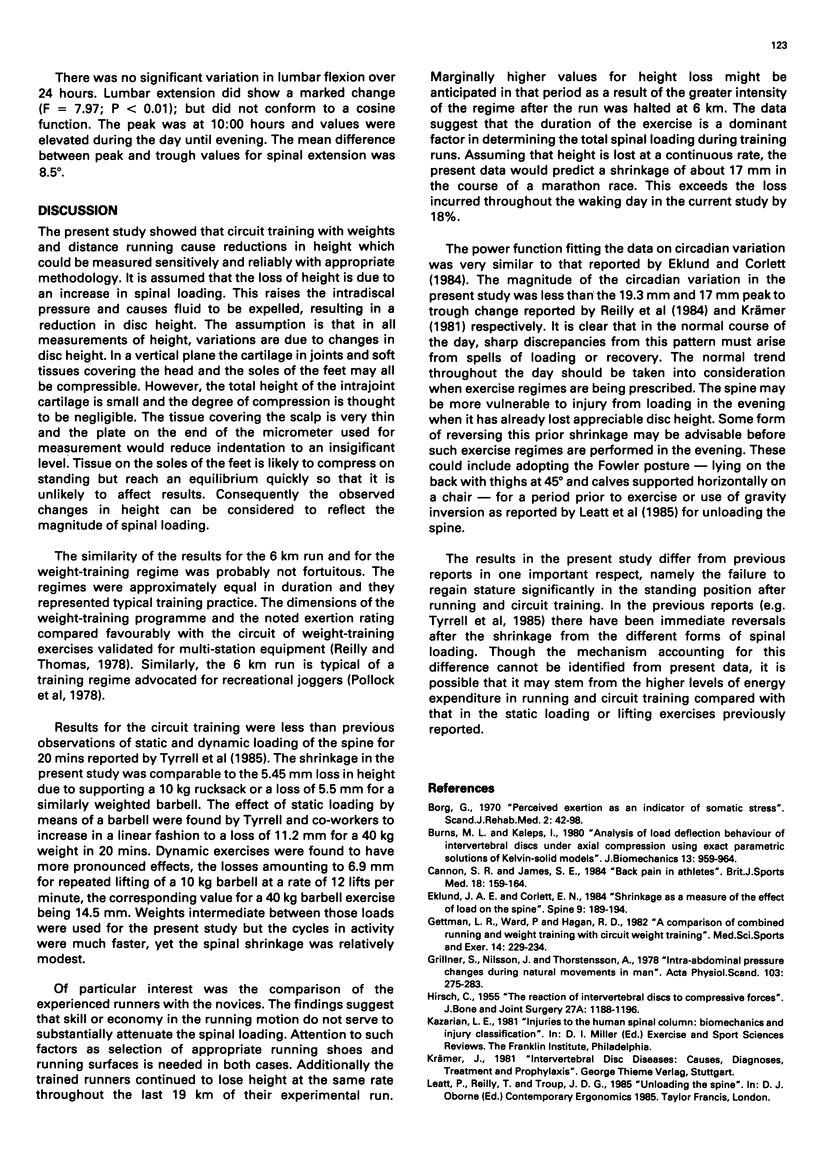
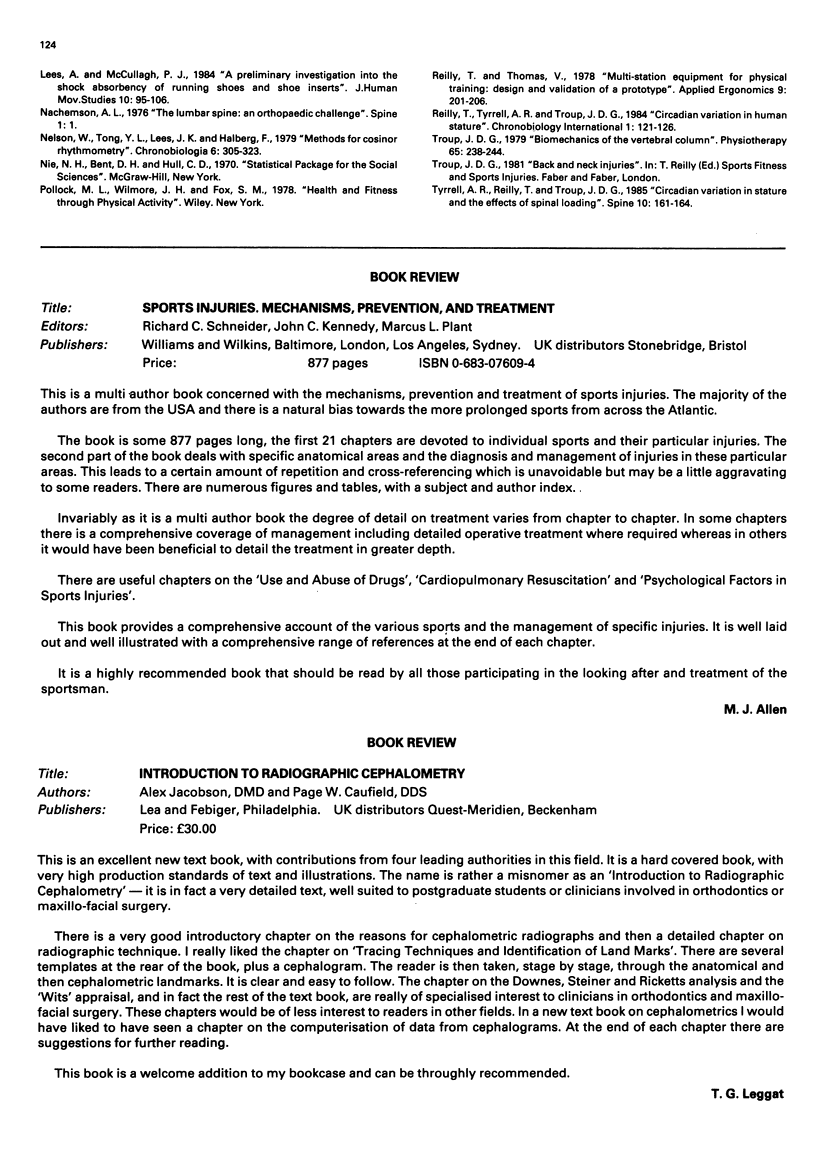
Images in this article
Selected References
These references are in PubMed. This may not be the complete list of references from this article.
- Burns M. L. Analysis of load-deflection behavior of intervertebral discs under axial compression using exact parametric solutions of Kelvin-solid models. J Biomech. 1980;13(11):959–964. doi: 10.1016/0021-9290(80)90167-0. [DOI] [PubMed] [Google Scholar]
- Cannon S. R., James S. E. Back pain in athletes. Br J Sports Med. 1984 Sep;18(3):159–164. doi: 10.1136/bjsm.18.3.159. [DOI] [PMC free article] [PubMed] [Google Scholar]
- Eklund J. A., Corlett E. N. Shrinkage as a measure of the effect of load on the spine. Spine (Phila Pa 1976) 1984 Mar;9(2):189–194. doi: 10.1097/00007632-198403000-00009. [DOI] [PubMed] [Google Scholar]
- Gettman L. R., Ward P., Hagan R. D. A comparison of combined running and weight training with circuit weight training. Med Sci Sports Exerc. 1982;14(3):229–234. [PubMed] [Google Scholar]
- Grillner S., Nilsson J., Thorstensson A. Intra-abdominal pressure changes during natural movements in man. Acta Physiol Scand. 1978 Jul;103(3):275–283. doi: 10.1111/j.1748-1716.1978.tb06215.x. [DOI] [PubMed] [Google Scholar]
- HIRSCH C. The reaction of intervertebral discs to compression forces. J Bone Joint Surg Am. 1955 Dec;37-A(6):1188–1196. [PubMed] [Google Scholar]
- Nelson W., Tong Y. L., Lee J. K., Halberg F. Methods for cosinor-rhythmometry. Chronobiologia. 1979 Oct-Dec;6(4):305–323. [PubMed] [Google Scholar]
- Reilly T., Thomas V. Multi-station equipment for physical training: design and validation of a prototype. Appl Ergon. 1978 Dec;9(4):201–206. doi: 10.1016/0003-6870(78)90080-7. [DOI] [PubMed] [Google Scholar]
- Reilly T., Tyrrell A., Troup J. D. Circadian variation in human stature. Chronobiol Int. 1984;1(2):121–126. doi: 10.3109/07420528409059129. [DOI] [PubMed] [Google Scholar]
- Troup J. D. Biomechanics of the vertebral column. Its application to prevention of back pain in the population and to assessment of working capacity in patients with lumbar spinal disability. Physiotherapy. 1979 Aug;65(8):238–244. [PubMed] [Google Scholar]
- Tyrrell A. R., Reilly T., Troup J. D. Circadian variation in stature and the effects of spinal loading. Spine (Phila Pa 1976) 1985 Mar;10(2):161–164. doi: 10.1097/00007632-198503000-00011. [DOI] [PubMed] [Google Scholar]



